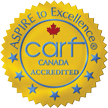As temperatures soar during the summer months, workplaces face increased risks related to heat stress and related health issues. For employers and employees alike, understanding these risks and implementing effective management strategies is crucial to ensuring workplace safety and well-being.
The Impact of Heat on Health
Heat-related health concerns range from mild discomfort to severe conditions such as heat exhaustion and heat stroke. These conditions can not only affect productivity but also pose serious risks to workers' health and safety.
- Understanding Heat Stress: Heat stress occurs when the body's mechanisms for regulating temperature fail due to excessive heat exposure. Symptoms include fatigue, dizziness, nausea, and in severe cases, loss of consciousness.
- Heat Exhaustion: Heat exhaustion is characterized by heavy sweating, rapid pulse, and muscle cramps. If not addressed promptly, it can lead to heat stroke.
- Heat Stroke: Heat stroke is a medical emergency that requires immediate attention. It occurs when the body's core temperature rises above 104°F (40°C), leading to confusion, fainting, seizures, and potentially fatal complications if not treated urgently.
Assessing Workplace Risks
Employers have a legal and moral obligation to assess and manage workplace risks associated with heat. This involves:
- Conducting Risk Assessments: Employers should evaluate the risk of heat-related illnesses based on factors such as temperature, humidity levels, and the physical demands of the job.
- Identifying Vulnerable Workers: Certain workers are more susceptible to heat-related illnesses, including older adults, individuals with pre-existing medical conditions, and those performing strenuous physical work.
- Monitoring Weather Conditions: Keeping track of weather forecasts helps employers anticipate days of high heat and implement preventive measures accordingly.
Implementing Preventive Measures
Prevention is key to mitigating heat-related risks in the workplace. Employers can take several proactive steps to protect their workers:
- Engineering Controls: Modify the workplace environment to reduce heat exposure, such as providing ventilation, shade structures, and air conditioning where feasible.
- Administrative Controls: Adjust work schedules to minimize exposure during the hottest parts of the day. Implement rest breaks in shaded or cooler areas to allow workers to hydrate and cool down.
- Personal Protective Equipment (PPE): Provide workers with appropriate PPE, such as lightweight, breathable clothing and hats, to help regulate body temperature.
- Hydration Programs: Encourage and facilitate regular hydration by providing access to cool water and electrolyte-replenishing drinks. Educate workers on the importance of drinking fluids even before they feel thirsty.
Training and Education
Ensuring that workers are informed about heat-related risks and preventive measures is essential:
- Training Programs: Conduct regular training sessions to educate workers and supervisors on recognizing symptoms of heat-related illnesses and responding effectively.
- Awareness Campaigns: Raise awareness through posters, leaflets, and toolbox talks about the dangers of heat stress and the importance of proactive measures.
- Encouraging Self-Monitoring: Encourage workers to monitor their own health and report any signs of discomfort promptly.
Responding to Heat-Related Illnesses
Despite preventive measures, heat-related illnesses can still occur. It is crucial to have protocols in place for responding to emergencies:
- Emergency Procedures: Establish clear procedures for recognizing and responding to heat-related illnesses, including first aid and emergency medical services.
- Providing First Aid Kits: Ensure that first aid kits are well-stocked and accessible, with specific supplies for treating heat-related conditions.
- Monitoring and Evaluation: Regularly review and update heat management strategies based on feedback from workers and any incidents that occur.
Managing heat-related health concerns in the workplace requires a comprehensive approach that includes risk assessment, preventive measures, training, and emergency preparedness. By prioritizing the safety and well-being of workers, employers can create a healthier and more productive work environment even during the hottest days of the year. Remember, a proactive stance today can prevent serious health issues tomorrow.



